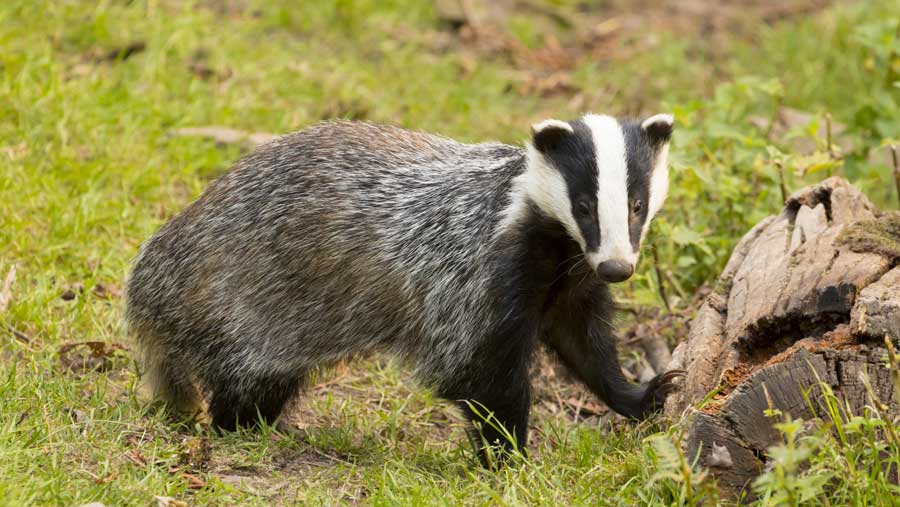Defra extends badger cull to seven new areas in England
 © Helen Davies/Adobe Stock
© Helen Davies/Adobe Stock Badger culling has been extended to seven new areas in England this year, including the new counties of Hampshire, Berkshire and Worcestershire, as part of efforts to reduce outbreaks of bovine tuberculosis in cattle.
Defra has confirmed that badger culling will take place this autumn in new areas in Hampshire, Berkshire, Staffordshire, Worcestershire, Shropshire and Oxfordshire.
Trained marksmen have been tasked with removing a minimum of 5,365 and a maximum of 7,273 badgers across these areas.
See also: Q&A: Defra chief vet outlines latest bovine TB strategy
Overall, the minimum number of badgers marksmen have been licensed to kill is 33,045 and the maximum is 75,930.
The objective is to achieve a 70% reduction in the badger population, in line with the Randomised Badger Culling Trial, which was conducted in England between 1998 and 2005, to deliver disease-reduction benefits for the cattle in those areas.
In 2019, after four years of culling, there was a 66% reduction in new TB breakdowns in cattle in Gloucestershire and a 37% reduction in Somerset, according to the peer-reviewed, scientific report by Downs et al.
However, advice from culling licensee Natural England states that culling “also needs to ‘not be detrimental to the survival of the population concerned’ within the meaning of Article 9 of the Bern Convention on the Conservation of European Wildlife and Natural Habitats.’”
A source close to the culls told Farmers Weekly that badger culling got under way at the start of this week (5-6 September).
Responding to the announcement, the NFU urged the government to follow the science in its efforts to eradicate bovine TB.
NFU deputy president Stuart Roberts said: “Bovine TB continues to devastate farming families across the country, causing huge strain emotionally, mentally and financially. Just last year, more than 27,000 cattle were slaughtered because of the disease.
“The government’s 25-year TB eradication strategy has provided farmers with some hope that this disease can be properly tackled, and there is clear, peer-reviewed evidence in the Downs report that badger culling is effective in reducing new bovine TB breakdowns in cattle as part of a complete strategy, with reductions of up to 66%.
“Moving forward, it’s absolutely crucial we have a strategy that is based on the available science and evidence and utilises methods that are proven to effectively control the spread of this disease.”
£4m policing costs
Meanwhile, Defra said policing the culls across all participating forces cost taxpayers £4,071,000 in 2020, the latest year of data available from police forces in England.
Officers are often called in to deal with patrols of campaigners protesting against badger culling, as well as to investigate allegations of wildlife crime, violence, harassment and intimidation from both farmers and anti-cull activists.
The current badger cull has been running in every year in England since 2013, when it started in the two counties of Gloucestershire and Somerset.
In May, following a public consultation, the government announced the next phase of its 25-year plan to eradicate bovine TB in England by 2038.
It said badger culling will be phased out over the next five years and no new culling licences will be issued after 2022.
Defra said the policy had helped to reduce to reduce bovine TB rates by half in certain areas, but it not want to continue culling badgers forever.
The Badger Trust hit out at the restart of the badger cull on its website. The trust has estimated that another 140,000 badgers will be removed over the next five years.
“This means we are only halfway through the senseless slaughter of 280,000 badgers. How can this ever be seen as ‘the end’?” said the trust, in a statement.
Vaccination projects
While it plans to phase out badger culling, the government will invest more money in badger vaccination, increased cattle testing and new diagnostic tools, and accelerate the development of a cattle vaccine.
The first stage of field trials of the cattle Bacille Calmette-Guérin (BCG) vaccine and diagnostic test to differentiate infected from vaccinated animals (Diva) got under way at a cattle farm in Herefordshire in July.
If the field trials are a success, Defra hopes a cattle vaccine and Diva test would be commercially available for farmers to use from 2025.
